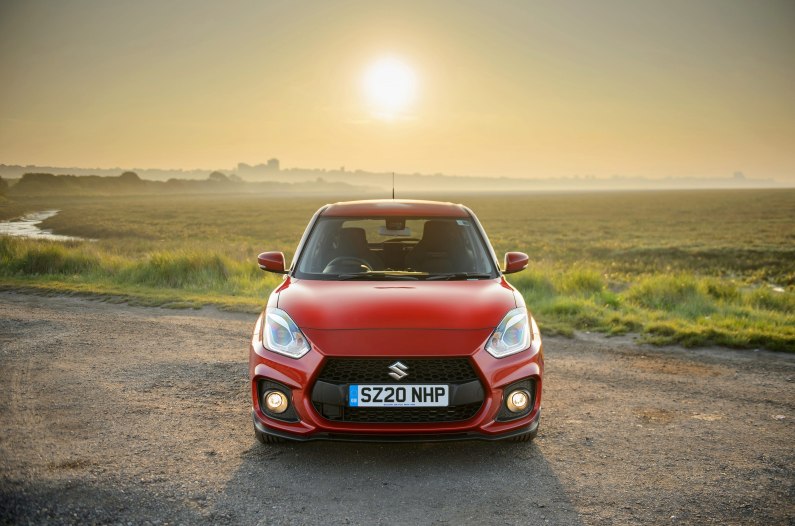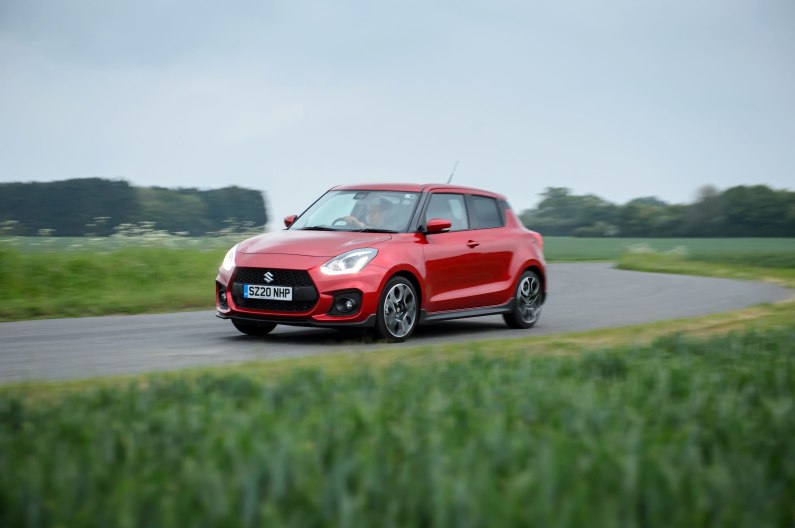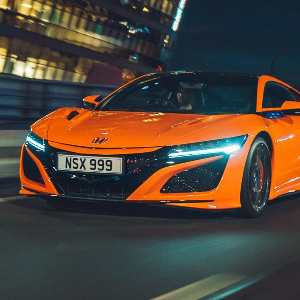
Suzuki’s Swift Sport has been hybridised as part of measures included across the firm’s range. Ted Welford finds out what it’s like.
What is it?

All cars in Suzuki’s range now features some level of hybrid assistance
This is Suzuki’s pocket-rocket – the Swift Sport. It’s a fun little hatchback that blurs the boundaries between a regular hatchback and a hot hatch, so for the sake of argument let’s call it ‘warm’.
When a Sport version first launched with the second-generation Swift supermini, it was famed for being a three-door and using a naturally-aspirated petrol engine – two things that have both changed two generations later. So, the latest model now uses a 1.4-litre turbocharged petrol engine and now comes in a five-door format only. We’ve been behind the wheel of this latest version to see what it’s like.
What’s new?

Wide arches and a deep front grille give the Swift plenty of presence
The current Swift Sport arrived onto the scene in 2018 and continued to impress with its fun drive, low weight and racey looks. But Suzuki is under increasing pressure to reduce its CO2 emissions to meet targets, and with no PHEVs or EVs in its range, it’s quite the challenge.
So an easy way for Suzuki to do this is to electrify its entire line-up. From the funky Ignis city car to the Vitara 4×4, all Suzukis now come with new mild-hybrid systems, and the Swift Sport hasn’t escaped this either.
So with a little ‘Hybrid’ badge on the boot and a tweaked powertrain, this is the new Swift Sport for 2020. But has electrification sapped the fun out of this sporty hatch?
What’s under the bonnet?

The Swift Sport is most at home on twisty country roads
It’s the same 1.4-litre petrol engine found pre-electrification in this latest Swift Sport, but it’s now mated to a 48-volt system. It’s essentially a mild-hybrid powertrain with the electricity helping to power the car’s ancillaries and provide extra assistance to the engine.
In total, the updated unit produces 127bhp and 235Nm of torque – that’s 11bhp down on power compared to before, but ever so slightly more torquey thanks to the hybrid system. But less power means less performance, with 0-60mph taking 0.7 seconds longer than before (now 8.9 seconds), though the 130mph top speed is unchanged.
The hybrid system, while adding only a small amount of weight, brings noticeable improvements to running costs, meaning the Swift can reach 50mpg in real-world conditions, with CO2 emissions of 127g/km.
What’s it like to drive?
The Swift Sport’s always been known for its fun, no-nonsense driving experience, and that absolutely remains the case. Despite a modest power output (mid-spec Clios can come with more power), the fact this Suzuki weighs just a little over a tonne makes up for that – feeling much quicker than the performance figures suggest.

